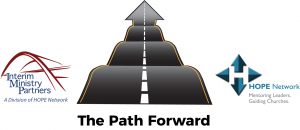The day will come when restrictions on gatherings will ease, people will emerge from their homes, and life will lurch back to normal once more. That means congregations can start to assemble again.
But let’s not imagine this will happen like flipping a light switch: stop meeting (off) … start meeting (on). Different people will have different reactions to the possibility of assembling as a church. Some will be eager. Some will be anxious. Many will be frightened. Others, who have no particular concern for themselves, will be anxious for their children or their parents. And some will be blithely oblivious to the fear and anxieties of their brothers and sisters: huggers will want to hug … close talkers will threaten to invade personal space.
Those first assemblies, themselves, will need to look and feel different if the healing process is to begin.
Now is the time for church leaders to start thinking about what those first meetings look like, how to manage them, what you hope they accomplish, the logistics involved, etc.. To prompt good planning, we recommend church leaders consider these ten things:
- Identify a range of responses anticipated from your members and plan with that entire range in mind. Don’t assume everyone will respond as you would … or as members of your leadership group would. Just as members vary by demographics, personality, experience, maturity, and health … they will also vary emotionally and spiritually to the opportunity to gather with their church family again. Keep that range of responses in mind as you plan. Be aware of your members’ fear and anxiety levels. Remember how oblivious some of your members can be. Recognize your people are not all cut from the same cloth. Be sensitive as you plan so you are not asking people to do things that feed their fears and anxieties.
- Set the right “leadership mindset” as you plan a resumption of church assemblies. You will find it helpful for your leadership group to live out of Romans 12-15 in the weeks ahead. General teachings become very specific and directive wisdom as you make plans for gathering once again as a church. For instance:
- Make up your mind not to put any stumbling block or obstacle in the way of a brother or sister. (Ro 14:13)
- If your brother or sister is distressed because of what you [decide], you are no longer acting in love. (Ro 14:15)
- We who are strong ought to bear with the failings of the weak and not to please ourselves. (Ro 15:1)
- Plan a gradual ramp-up for gatherings. Don’t ask your members to jump from social isolation to whole-church-immersion overnight. They need time and space to ease into gathering again.
- Start by convening gatherings of smaller groups—10-20 people at a time … multiple different meetings for worship on Sunday.
- Limit the amount of time required in a group setting. Invite your people to spend thirty minutes together, not an hour and a half.
- Limit some of your gatherings by age; e.g., permit those who are older and more physically vulnerable to meet with others like themselves rather than risk exposure to 5-year-olds running around.
- A critical part of preparation for those first assemblies involves setting expectations for and communicating them to your members. There is a world of difference between planning a gathering and preparing your people to act appropriately at that gathering. All it will take is one person exuberantly hugging everyone to scare some members away from your assemblies for months. And—if you don’t set expectations—there will be those who won’t show up for fear of a lack of boundaries. Tell your members how they should act during those first few assemblies. Ask them to wear gloves, refrain from physical contact, wash their hands, maintain a safe(r) distance. Define what constitutes “appropriate contact” at those initial meetings. Such requests will not last forever. But they are appropriate and necessary for the short term. Get the word out well in advance and by every medium at your disposal: email, website, phone-tree, texts, announcements in your online offerings, etc..
- Pay attention to logistics. You want to send a message to your members that you take their health and welfare seriously. You don’t communicate that with a rush to return to business as usual in terms of sanitation, hygiene, and cleanliness. These are unusual times and require unusual measures. When your members see their leaders going to extraordinary lengths to protect their well-being, that will engender trust and confidence—both desperately needed in a “reboot” situation. So … recruit volunteers to disinfect door handles, light switches, handrails, etc.—before, during, and after assemblies. Set out card tables with hand-sanitizing dispensers, wet-wipes, disposable gloves, and paper towels/tissues and make sure they are all stocked. Purchase additional trash receptacles to place by all doors and at each table. Recruit and train volunteers (via Zoom) on greeting people with a smile and friendly tone versus a hug and a handshake. Make and post signs on expected etiquette (“A smile is better than a handshake” … “Six feet is the new personal space” … “No hug zone”). Think about seating arrangements in your auditorium: we should encourage dispersed seating rather than crowding people in close … one family per pew … if your auditorium is normally full, this may be a great time to start a second service. All these measures (and more) will assure your people that you are aware of the hazards and taking appropriate precautions. And be prepared to continue these precautions for the foreseeable future.
- Think about where you should hold your first gatherings. If you start out convening small group gatherings, should you meet in homes (where there is less exposure to viral contamination than in a public building that a number of groups are using)? Do you have an outdoor venue that—given good weather—may comprise a safer gathering space? Perhaps utilizing classrooms in your building with a good, thorough cleansing between group meetings?
- Continue to offer online worship experiences for those who are too fearful to come out and socialize. Those people are important too. We cannot afford to ignore them simply because they are more fearful or anxious than others. Keep doing what you are now doing anyway and honor all of your people by including everyone in a worship time they can experience.
- Plan a custom service with a laser-focused and relevant theme. Don’t think that a “business as usual” service will suit the occasion. In the rush to get back to some sense of normalcy, you shouldn’t simply dust off your old worship format: three songs, a sermon, and a prayer (and, of course, closing announcements!). You have an opportunity to speak to the occasion, to where the hearts of your people are, to the needs and yearnings of your community. So celebrate! Praise God for deliverance. Read and meditate on a Psalm. (Certainly the 23rd would be appropriate … but also Psalm 20, 40, 116, or 121.) Offer up prayers for your community. Ask God’s mercy on and wisdom for political leaders. Hear testimonials from your people about God’s providence and care in difficult times. Sings songs about God’s love and compassion.
- Make Communion the centerpiece of your gathering. Yes, you’ll need to do something different from passing around communal bread and wine. You may need to provide individually wrapped communion elements or ask families to bring their own supplies. But—whatever the logistical necessities—take your time, prolong the ritual, remember resurrection follows death and hope follows darkness, speak peace and encouragement to each other. Nothing says “family” quite like a shared meal. Nothing says “God’s family” quite like this communion supper. You can forego a sermon. You don’t need to sing ten songs. But you have an opportunity to make this a memorable communion supper your members will look back on with fondness and gratitude.
- Make fellowship a priority during your first assemblies. Fellowship around the table. Fellowship through testimonials. Time to visit and share stories. Time to revel in being released from isolation and being present with people we love. Don’t make the mistake of talking your people to death (something many churches did in the old normal). Dispense with a sermon—this isn’t really a sermon moment. Don’t make a bunch of announcements. Don’t ask your people to stare at the back of each other’s heads while someone on the stage informs, instructs, enlightens, notifies, reports, and otherwise talks, talks, talks. Let them enjoy being together. Let them enjoy being together in God’s presence. Let them hear each other’s voices and stories. Let them stare at each other’s faces. Time will be limited during these first few assemblies. Use it well and wisely. Give the people what they need—time with each other and with God.




